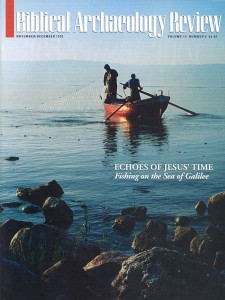26 Tons of Gold and 65 Tons of Silver: Too Much To Believe?
The Copper Scroll is one piece that doesn’t fit the Dead Sea Scroll puzzle. Inscribed on metal and consisting simply of a list of 64 locations where huge amounts of treasure are said to be buried, the Copper Scroll has divided scholarly opinion for decades: Is it a list of something real or is it merely some fantasy, to be taken no more seriously than a child’s map of buried pirate treasure?
Most of the scholars who first studied the scroll in the 1950s were not taken in by its fantastical aspects. J. T. Milik, the scholar entrusted with publishing the scroll, compared it to documents from Jewish folklore that claimed to describe treasure and sacred vessels from the First Temple hidden before they could be looted by the conquering Babylonians in 587 B.C. In Milik’s view the Copper Scroll was equally folkloric—only it had to do with the Second Temple, not the first. Indeed, the research team entrusted with publishing the Dead Sea Scrolls first described the Copper Scroll in a press release as merely “a collection of traditions about buried treasure.”1
The principal basis for this conclusion is the impossibly large amounts of the supposedly buried caches of gold and silver.
In more recent years, scholarship has drifted in the other direction, until today, it is fair to say, there is a developing consensus that the Copper Scroll is fact, not fiction, and describes actual hiding places—or at least that is what the author intended to describe.
Why this change in scholarly opinion? The answer lies in the nature of the Copper Scroll itself and in what it contains.
Already a library member? Log in here.
Institution user? Log in with your IP address.

